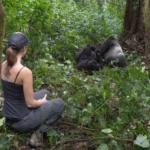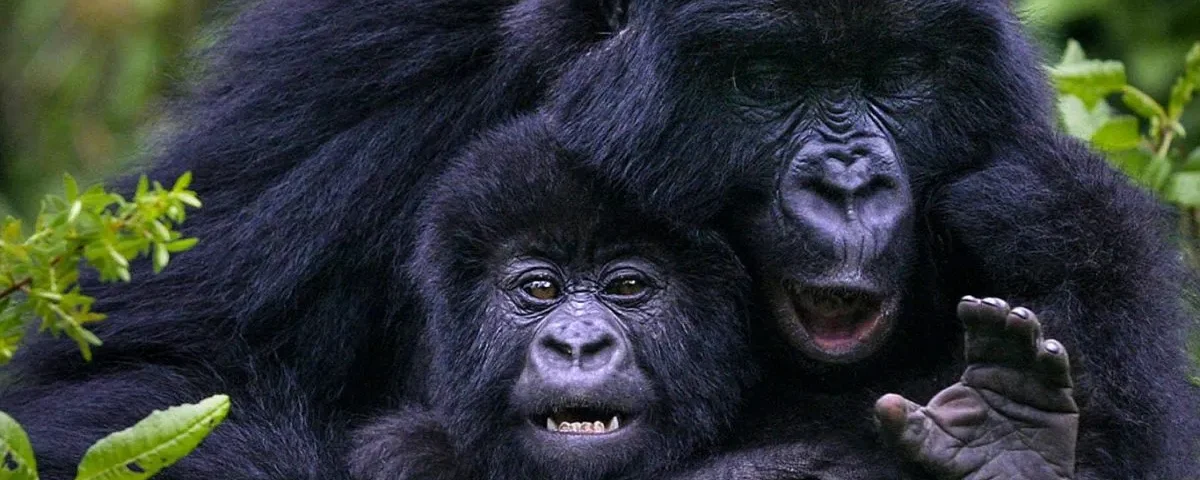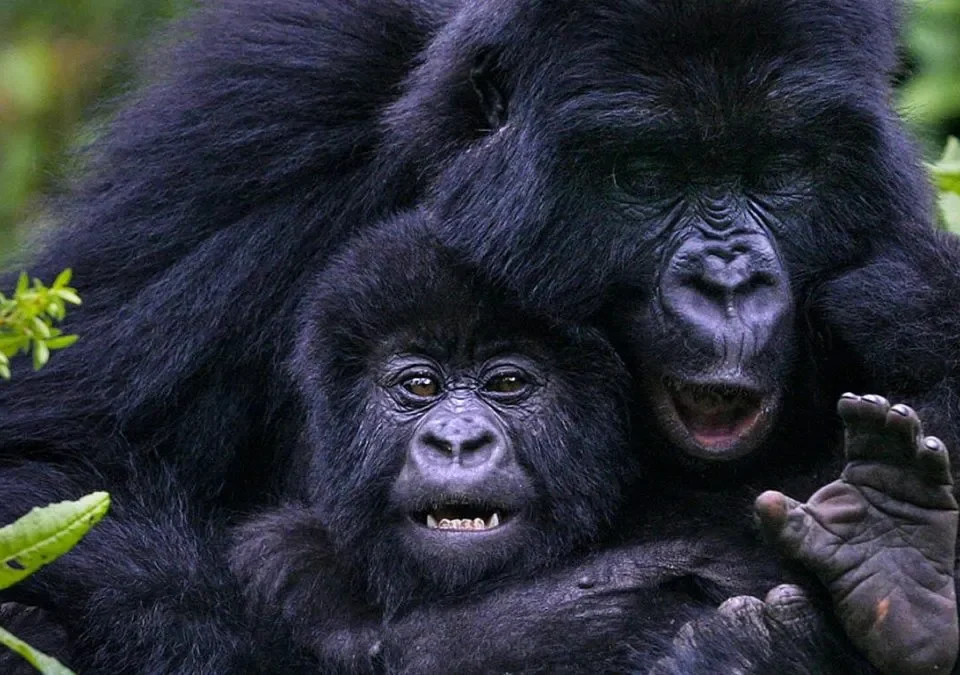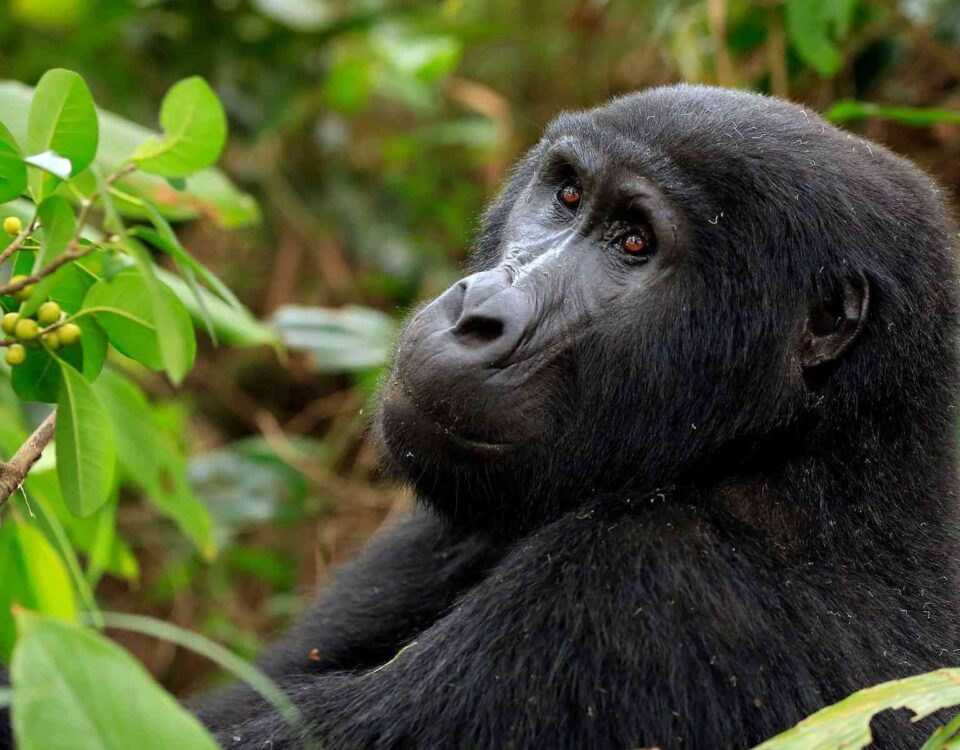
How Long is the Trek to See Gorillas in Rwanda?
April 7, 2025
What is the Cheapest Way to Go Gorilla Trekking?
April 8, 2025Is Rwanda Better than Uganda for Gorilla Trekking?
Gorilla trekking is undoubtedly one of the most sought-after wildlife experiences in the world, offering a rare opportunity to witness the majestic mountain gorillas in their natural habitat. Rwanda and Uganda are two of the most famous destinations for this extraordinary adventure, each offering unique experiences for those wishing to embark on a trek. While both countries provide the chance to see these endangered creatures, the question of whether Rwanda or Uganda is better for gorilla trekking depends on several factors, including the trekking experience, cost, accessibility, accommodation, and conservation efforts.
In this detailed guide, we will delve into the key differences between gorilla trekking in Rwanda and Uganda, helping you determine which destination is best suited to your preferences and travel goals.
Gorilla Trekking in Rwanda: A Smooth, Premium Experience
Rwanda, often called the “Land of a Thousand Hills,” is renowned for its stunning landscapes and exceptional conservation efforts. The country’s Volcanoes National Park, located in the northwest, is the primary site for gorilla trekking, providing an accessible and organized experience for visitors.
Accessibility and Proximity
One of Rwanda’s most significant advantages for gorilla trekking is its accessibility. Volcanoes National Park is only a 2.5-hour drive from Kigali, Rwanda’s capital, which is home to the country’s international airport. This proximity makes it incredibly easy for travelers to fly into Kigali and quickly transfer to the park, allowing for a more time-efficient trek compared to Uganda.
The convenience of reaching Volcanoes National Park directly from Kigali without long and challenging road trips is a major selling point for travelers with limited time or those who prefer minimal travel hassle. Whether you’re on a short trip or simply want to maximize your time in the field, Rwanda provides a swift and simple route to your gorilla trekking experience.
Trekking Experience
Rwanda offers a relatively smooth and less physically demanding trekking experience compared to Uganda. The terrain in Volcanoes National Park is less rugged and features well-maintained trails, which helps create a more comfortable trekking environment. Trekkers can expect shorter treks, often lasting between 1 and 3 hours, depending on where the gorillas are located. This makes it ideal for travelers of varying fitness levels and those looking for a more relaxed hike through the forest.
Additionally, the relatively smaller size of Volcanoes National Park means that groups tend to have better access to the gorillas. With fewer trekking groups allowed on any given day, Rwanda offers a more intimate experience, and the chances of seeing gorillas are higher. Professional and experienced guides further enhance the experience by ensuring trekkers are well-informed throughout the journey.
Costs and Permit Fees
Gorilla trekking in Rwanda is more expensive than in Uganda, with permits priced at $1,500 per person. While this is a significant cost, the higher price reflects the overall quality of the trekking experience, including well-organized logistics, top-tier guides, and luxury accommodations in the area. For travelers seeking a more refined, comfortable, and premium experience, Rwanda stands out as an excellent choice.
While the cost may deter some, the quality of service and the premium experience justify the price for many visitors. Moreover, the higher permit fee helps fund conservation efforts and community development initiatives around Volcanoes National Park, contributing to the protection of the mountain gorillas and their habitat.
Gorilla Trekking in Uganda: Rugged Adventure in Bwindi Impenetrable National Park
Uganda is home to two main gorilla trekking sites: Bwindi Impenetrable National Park and Mgahinga Gorilla National Park. Bwindi, a UNESCO World Heritage Site, is famous for harboring over half of the world’s remaining mountain gorilla population, making it a significant destination for gorilla trekking enthusiasts.
Accessibility and Proximity
While Uganda’s gorilla trekking sites are just as thrilling, they require a bit more effort to reach. Bwindi Impenetrable National Park, in particular, is located in a remote region of southwestern Uganda, around 9 hours by road from the capital city of Kampala or Entebbe. While there are options to fly directly to nearby airstrips such as Kihihi or Kisoro, the overall journey is longer and can be more challenging than the quick access to Rwanda’s Volcanoes National Park.
For adventurous travelers who don’t mind long road trips, Uganda offers a deeper immersion into the African wilderness, with scenic routes and opportunities to experience rural life along the way. However, the extended travel time may be less appealing to those with limited time or those seeking a more convenient trek.
Trekking Experience
The trekking experience in Uganda is often considered more rugged and adventurous. Bwindi Impenetrable National Park’s dense forests and steep terrain present a physically challenging hike, which appeals to travelers seeking a more authentic, wilderness experience. The treks here can range from 1 to 8 hours, depending on the location of the gorillas, and can be more strenuous due to the park’s challenging topography.
Bwindi is also much larger and less organized than Volcanoes National Park, meaning that trekkers may encounter a more raw and untamed environment. This can be appealing for those who want to feel closer to nature and enjoy the thrill of navigating through thick jungle undergrowth and rocky hills.
Moreover, the less crowded nature of Bwindi, with fewer trekkers per day, offers a more private and intimate encounter with the gorillas. Many visitors find this exclusivity adds to the overall sense of adventure and connection with the wildlife.
Costs and Permit Fees
Uganda is a more affordable destination for gorilla trekking, with permits priced at $800 per person, significantly cheaper than Rwanda’s $1,500 fee. This lower price makes Uganda an excellent choice for budget-conscious travelers, families, or those looking to do multiple treks. The cost difference allows you to enjoy a longer stay, participate in other activities such as safari tours, and explore more of Uganda’s diverse wildlife offerings.
Conservation and Sustainability
Both Rwanda and Uganda have made impressive strides in mountain gorilla conservation. Rwanda has been widely praised for its effective conservation policies, including anti-poaching measures, habitat restoration, and community involvement. The revenue generated from high trekking permit fees directly contributes to the protection of gorillas and their habitat.
Uganda, too, has a strong commitment to conservation, with Bwindi Impenetrable National Park being a focal point of mountain gorilla preservation efforts. The lower permit fees in Uganda help ensure sustainable tourism while also benefiting local communities through community-based initiatives.
Which is Better for Gorilla Trekking: Rwanda or Uganda?
The choice between Rwanda and Uganda for gorilla trekking largely depends on personal preferences and priorities. If you are looking for a smoother, more luxurious, and easily accessible trekking experience, Rwanda is likely the better choice. With short travel times, well-maintained trails, and higher-end services, Rwanda provides a premium experience that many travelers find appealing.
However, if you are an adventure seeker looking for a more rugged and authentic trekking experience at a more affordable price, Uganda’s Bwindi Impenetrable National Park might be the right fit. The longer travel times and more challenging terrain add a sense of adventure, while the lower costs make it a more budget-friendly option.
Both countries offer exceptional opportunities to see the endangered mountain gorillas up close, and whichever destination you choose, you are guaranteed an unforgettable experience in one of the world’s most stunning natural environments.




